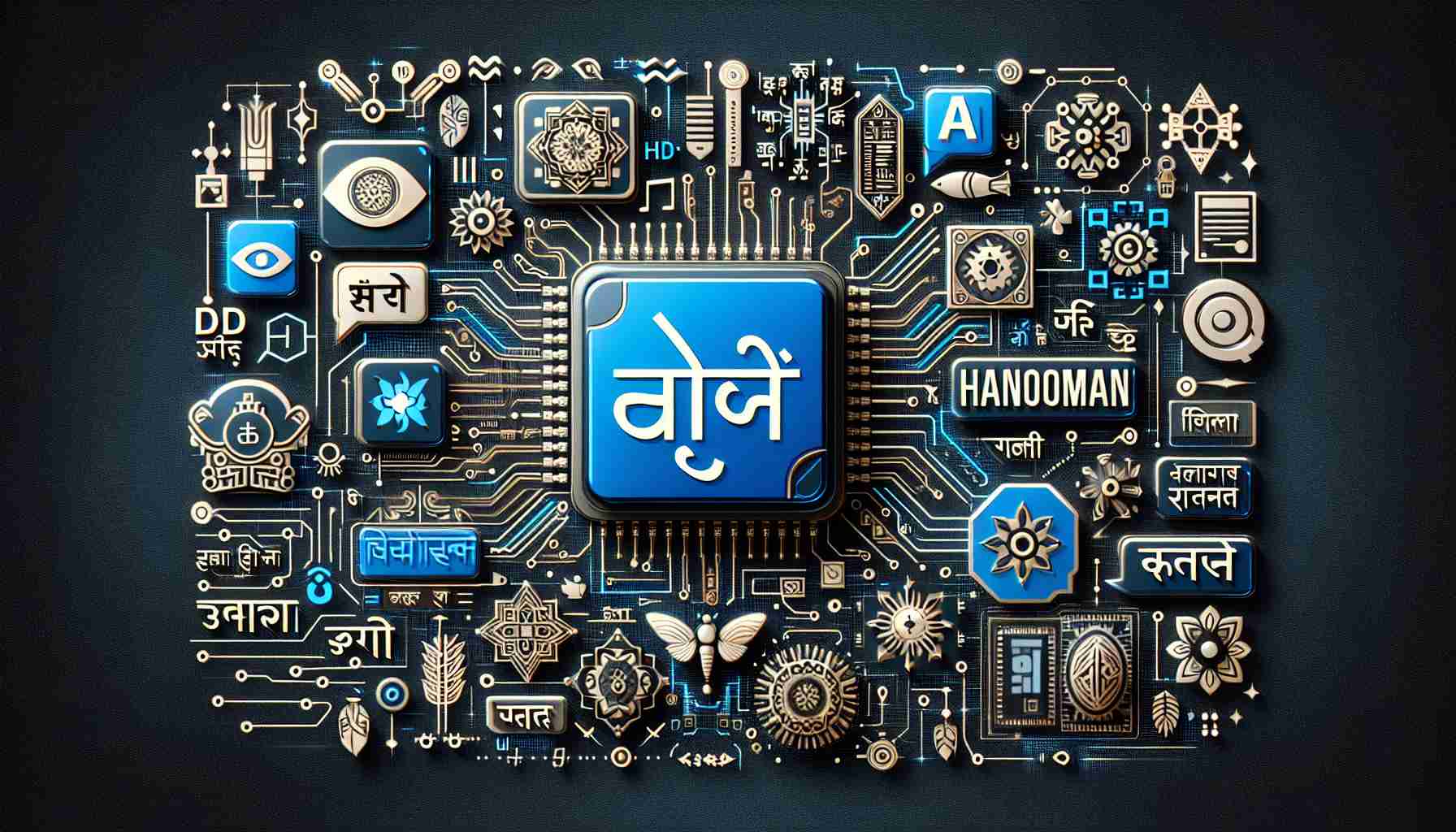A groundbreaking project called Hanooman is set to make waves in the world of artificial intelligence (AI). Supported by Reliance Industries, one of India’s leading conglomerates, and prominent engineering institutions in the country, Hanooman is a suite of Indic large language models (LLMs) that promises to transform how text and speech are understood and generated in Indian languages.
Unlike other language models developed by tech giants, Hanooman’s main objective is to address concerns regarding accuracy and bias. By focusing on India’s unique linguistic and cultural heritage, the project aims to cater specifically to the country’s AI needs. In an interview with ET, Ganesh Ramakrishnan, chair professor at the Department of Computer Science & Engineering at IIT-B and head of the project, emphasizes the goal of Hanooman: “to build generative AI capabilities for India, marrying Bharatiya linguistic and cultural heritage with technological innovation for catering to the large need for AI in the country.”
The name Hanooman is derived from the Hindu God Hanuman, symbolizing the project’s dedication to the public good. Developed by Seetha Mahalaxmi Healthcare (SML) in collaboration with the BharatGPT ecosystem led by IIT Bombay, Hanooman aims to provide Indian users with powerful AI capabilities developed specifically for their language and cultural requirements.
The project is a result of a joint effort by several Indian institutions, including IIT Bombay and seven other IITs, as well as the Department of Science and Technology, SML, and Reliance Jio. This collaboration ensures that Hanooman receives the necessary expertise and support to revolutionize language models in India.
Hanooman has set ambitious goals to address the unique needs of various sectors in India. Its objectives include creating a powerful AI model trained on Indian languages, providing an open-source alternative to commercially available LLMs, and offering closed-source solutions for enterprises requiring on-premise applications.
The functionalities of Hanooman are as diverse as its goals. It can generate text and speech in multiple Indian languages, starting with 11 and expanding to cover all 22 official languages. Additionally, Hanooman can summarize conversations through automatic speech summarization, assist students with homework, and support teachers with educational activities.
The potential applications of Hanooman span across various sectors. In healthcare, the AI model can summarize doctor-patient consultations and provide language support for patients. In education, it offers personalized learning tools and dialect-specific educational resources. For the banking and finance industry, Hanooman enables language translation for financial services. Moreover, it facilitates content creation and translation in Indian languages, enriching the world of entertainment.
At present, Hanooman can converse in 11 Indian languages, including Hindi, Tamil, Telugu, Malayalam, and Marathi. However, the project aims to expand its capabilities to encompass all 22 official languages spoken in India.
With its focus on addressing accuracy, bias, and cultural considerations, Hanooman is set to revolutionize AI language models in India. By combining the strength of technological innovation with India’s rich linguistic heritage, Hanooman is poised to empower users across multiple sectors and foster a new era of AI in the country.
FAQ
What is the main goal of Hanooman?
The main goal of Hanooman is to build generative AI capabilities specifically tailored to India’s linguistic and cultural heritage.
Who is developing Hanooman?
Hanooman is being developed by the collaborative effort of the BharatGPT ecosystem, led by IIT Bombay, along with support from various other IITs, the Department of Science and Technology, SML, and Reliance Jio.
What are some potential applications of Hanooman?
Hanooman has diverse applications across various sectors, including healthcare (summarizing consultations, providing language support), education (personalized learning, dialect-specific resources), banking and finance (language translation), and entertainment (content creation and translation).
In how many Indian languages can the model currently converse?
Currently, the model can converse in 11 Indian languages, with a plan to expand its capabilities to cover all 22 official languages spoken in India.
What is the main goal of Hanooman?
The main goal of Hanooman is to build generative AI capabilities specifically tailored to India’s linguistic and cultural heritage.
Who is developing Hanooman?
Hanooman is being developed by the collaborative effort of the BharatGPT ecosystem, led by IIT Bombay, along with support from various other IITs, the Department of Science and Technology, SML, and Reliance Jio.
What are some potential applications of Hanooman?
Hanooman has diverse applications across various sectors, including healthcare (summarizing consultations, providing language support), education (personalized learning, dialect-specific resources), banking and finance (language translation), and entertainment (content creation and translation).
In how many Indian languages can the model currently converse?
Currently, the model can converse in 11 Indian languages, with a plan to expand its capabilities to cover all 22 official languages spoken in India.
Definitions:
– Large language models (LLMs): Language models that are designed to understand and generate text and speech.
– AI: Artificial Intelligence, the theory and development of computer systems capable of performing tasks that would normally require human intelligence.
– Linguistic and cultural heritage: The unique languages and cultural practices of a specific group or region.
– Bharatiya: Refers to the linguistic and cultural traditions of India.
– Closed-source solutions: Proprietary software solutions that are not openly available for modification or distribution.
– Open-source alternative: Software that is freely available for use, modification, and distribution by the public.
– Automatic speech summarization: Using AI to generate summaries of spoken conversations.
– Dialect-specific: Tailored to specific regional variations of a language.
Related Links:
– Reliance Industries
– IIT Bombay
– Department of Science and Technology
– Reliance Jio
The source of the article is from the blog kewauneecomet.com

